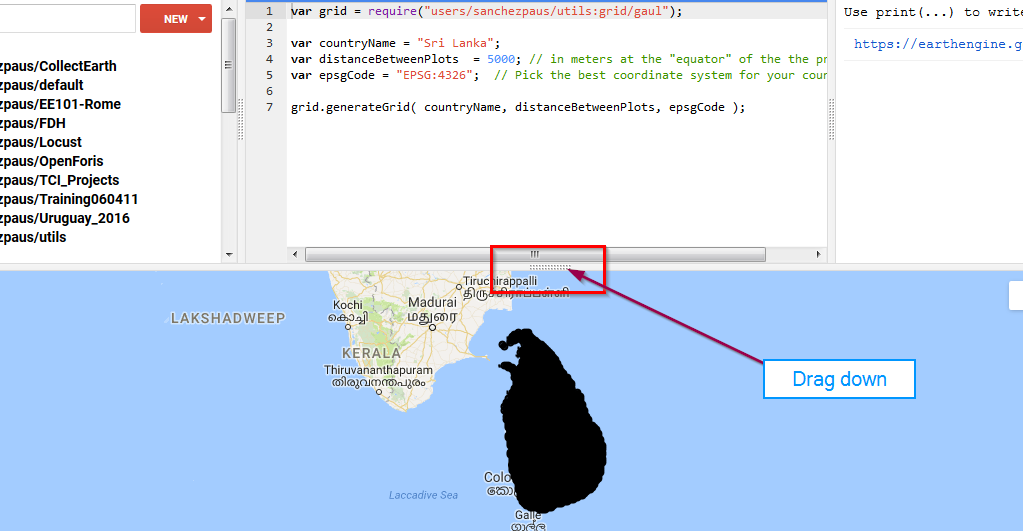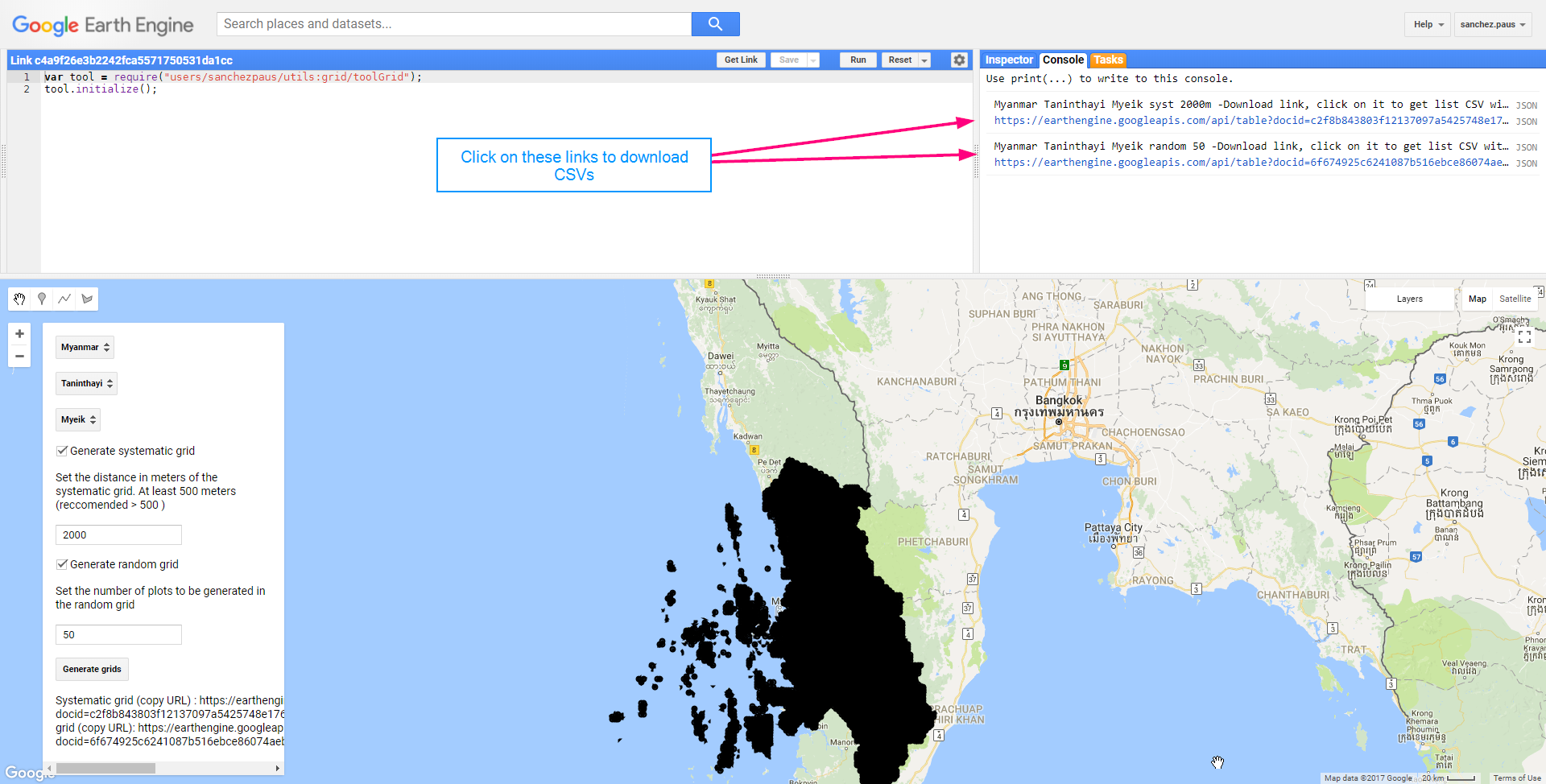|
So I am trying to create a custom project to survey tree cover in Myanmar. The version of Collect Earth that I downloaded is the "drylands demo" and appears to only include the US, Canada and Mexico. I need to overlay a grid for my study area in Myanmar. I found this answered question from 2015, but I am wondering if there is a better/newer way to go about this? https://openforis.support/questions/71/creating-a-custom-project Any help is appreciated, I am totally new to this and not sure exactly what to do. Thank you! |
|
Hi Ashley, You could try this answer Basically, use the simple IPCC survey proposed in that post and also the link from Google Earth Engine link to generate the grid over Myanmar. You load the survey on Collect Earth and then you go to Tools->Properties to load the CSV file with the plot locations generated in Google Earth Engine (you need to register as beta tester in order to use GEE ) /Support Thank you for the suggestion! Is there some sort of tutorial for GEE? I'm not seeing the Run function or anything they mention in the answer you linked, except for the polygon drawing which I assume is what I use to create the grid? |
|
Yo |
|
Okay this makes more sense now, thank you! How would i determine what to change the distance between plots to? My only country of interest is Myanmar. |
|
So sample size calculation is a bit more tricky. There are two things you need to consider:
So there are two approaches to try to accomodate these aspects :
Thank you again for all the helpful information! So this time I was able to generate a random grid of 1000m x 100 as a test, however when I went to Run it to get a CSV table it failed. After 16 seconds the error message reads "Error: Error in map(ID=0_0001889cb5f78ad69ad2): Feature.select: Selected a different number of properties (11) than names (12)." I am unsure of what this means, am I doing something wrong? |
|
Hi Ashley, The script seems to be running fine...can you try again? This is the latest version https://code.earthengine.google.com/c4a9f26e3b2242fca5571750531da1cc /Regards I tried again, still an error, this time after 2 minutes. Maybe I am doing something wrong? I input the same values (1000m and 100 plots) and click Generate Grids, then there are two items under the Tasks tab in the top section, on the far right. I clicked Run next to "Myanmar random 100". I also tried to Run the "Myanmar syst 100" and that one failed almost immediately. |
|
Hi Ashley, You are right, there is a problem with the script. If you choose a distance of 1000 meters the script fails due to an "out of memory" exception. For Myanmar (676,578 km²), a grid of 1000 meters means 676,578 plots... that is a bit too much for Google Earth Engine to handle (this grid generation script is not really what Google Earth Engine is made to do) The random grid generation seems to be working well though, did you try that? I just generated a 10.000 plots grid using the script and it seems fine : here the link in case you want to download it. Do you really need a 1.000 meters grid for all of Myanmar? Do you have a predefined study area? If you do I might be able to help you to generate the grid for just that area avoiding the "out-of-memory" issues. |
|
I have modified the script so that now you can choose a province or district within the country. This should speed up the dense grid generation a lot! Check it: https://code.earthengine.google.com/c4a9f26e3b2242fca5571750531da1cc Thank you so much! You are right, that was a very large number of plots for GEE to generate; my study area is Rakhine state so it is a lot better for me to focus on this one area. Unfortunately, the script is still failing even when I select Myanmar, then Rakhine state, and set the grid to 2000m x 50 plots. I really appreciate all of your help with this! |
|
Excel is not the best software when it comes to CSV as it is not "smart" enough. In order to open a CSV file properly you have to define the character used as separator. By default Excel tries to use the semicolon (;) character while the CSV files generated by GEE have a comma as column separator. You can try to open the file this way instead: LINK (use commas!! ) Or even better you can install LibreOffice which has a much better CSV handling capacity. Regards and happy new year! Thank you! So I am now finally able to clean the CSV file. I left only the first 3 columns (for my file it says earthID, latitude, longitude). When I try to load it into Collect Earth there is an error. Then I realized the "earthID" column is blank. I am sure something was wrong so I went back to this question since it had been awhile (https://openforis.support/questions/1444/creating-sampling-grid-for-collect-earth?page=1&focusedAnswerId=1445#1445). I see that their CSV file has just id for the first column, with 6-digit values. What do these ID numbers mean, and why are mine blank? |

 u need to drag down the top bar in order to see the code and the run button:
u need to drag down the top bar in order to see the code and the run button: